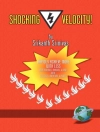Packed with exercises, checklists, and how-to sections, this robust lab manual gives students hands-on guidance and practice for analyzing their own psychological research. The lab manual’s four sections include activities that correspond directly with the chapters of Dawn M. Mc Bride’s The Process of Statistical Analysis in Psychology; activities related to data analysis projects (including data sets) that students can manipulate and analyze; activities designed to help students choose the correct test for different types of data; and exercises designed to help students write up results from analyses in APA style.
Table des matières
Preface
Introduction for Students
Section 1. Topic Activities
1. Statistics in the Media
2. The Purpose of Statistics
3. Understanding Your Data
4. Research Concepts: Designs, Validity, and Scales of Measurement
5. Measurement Group Activity
6. Designing an Experiment Group Activity
7. Experimental Variables
8. Distributions and Probability
9. Displaying Distributions
10. Setting Up Your Data in SPSS: Creating a Data File
11. Displaying Distributions in SPSS
12. Basic Probability
13. Sampling
14. Central Tendency 1
15. Central Tendency 2
16. Central Tendency in SPSS
17. Describing a Distribution by Hand
18. More Describing Distributions
19. Descriptive Statistics Exercise
20. Descriptive Statistics With Excel
21. Measures of Variability in SPSS
22. Calculating z Scores Using SPSS
23. The Normal Distribution
24. z Scores and the Normal Distribution
25. Hypothesis Testing With Normal Populations
26. Stating Hypotheses and Choosing Tests
27. Hypothesis Testing With z Tests
28. Hypothesis Testing With a Single Sample
29. One-Sample t Test in SPSS
30. One-Sample t Tests by Hand
31. Related Samples t Tests
32. Related Samples t Test in SPSS
33. Independent Samples t Tests
34. Hypothesis Testing: Multiple Tests
35. More Hypothesis Tests With Multiple Tests
36. t Tests Summary Worksheet
37. Choose the Correct t Test
38. One-Way Between-Subjects ANOVA by Hand
39. One-Way Between-Subjects ANOVA in SPSS
40. Factorial ANOVA
41. One-Way Within-Subjects ANOVA
42. One-Way Within-Subjects ANOVA in SPSS
43. ANOVA Review
44. Which Test Should I Use?
45. Correlations and Scatterplots Exercise
46. Correlations and Scatterplots 2
47. Correlations and Scatterplots in SPSS
48. Computing Correlations by Hand
49. Computing Correlations by Hand 2
50. Hypothesis Testing With Correlation
51. Hypothesis Testing With Correlation Using SPSS
52. Regression
53. Chi-Square Test for Independence
Section 2. Meet the Formulae
54. Meet the Formula: Standard Deviation
55. Meet the Formula: z Score Transformation
56. Meet the Formula: Single-Sample z Tests and t Tests
57. Meet the Formula: Comparing Independent Samples and Related Samples t Tests
58. Meet the Formula: One-Factor Between-Subjects ANOVA
59. Meet the Formula: Two-Factor ANOVA
60. Meet the Formula: One-Factor Within-Subjects ANOVA
61. Meet the Formula: Correlation
62. Meet the Formula: Bivariate Regression
Section 3. Data Analysis Projects
63. Data Analysis Exercise: von Hippel, Ronay, Baker, Kjelsaas, and Murphy (2016)
64. Data Analysis Exercise: Nairne, Pandeirada, and Thompson (2008)
65. Data Analysis Project 1: Crammed Versus Distributed Study
66. Data Analysis Project 2: Teaching Techniques Study
67. Data Analysis Project 3: Distracted Driving Study
68. Data Analysis Project 4: Temperature and Air Quality Study
69. Data Analysis Project 5: Job Type and Satisfaction Study
70. Data Analysis Project 6: Attractive Face Recognition Study
71. Data Analysis Project 7: Discrimination in the Workplace Study
Section 4. How to Choose a Statistical Test
72. Using the Flowchart to Find the Correct Statistical Test
73. More Using the Flowchart to Find the Correct Statistical Test
74. Research Design Exercise
75. Design and Data Collection Exercise
76. Designs and Analyses
Section 5. Describing and Interpreting Results in APA Style
77. Writing a Results Section From SPSS Output: t Tests
78. Writing a Results Section From SPSS Output: ANOVA
79. Interpreting Results Exercise: Sproesser, Schupp, and Renner (2014)
80. Interpreting Results Exercise: Ravizza, Uitvlugt, and Fenn (2017)
Appendix: Summary of Formulae
References
A propos de l’auteur
J. Cooper Cutting (Ph D, cognitive psychology, University of Illinois at Urbana-Champaign) is associate professor of psychology at Illinois State University. Dr. Cutting’s research interests are in psycholinguistics, primarily, with a focus on the production of language. A central theme of his research is how different types of information interact during language use. He has examined this issue in the context of lexical access, within-sentence agreement processes, figurative language production, and pragmatics. He has taught courses in research methods, statistics, cognitive psychology, computer applications in psychology, human memory, psycholinguistics, and sensation and perception. He is also a recipient of the Illinois State University SPA/Psi Chi Jim Johnson Award for commitment to undergraduate mentorship, involvement, and achievement. His non-academic interests include gardening and reading science fiction and fantasy novels.












